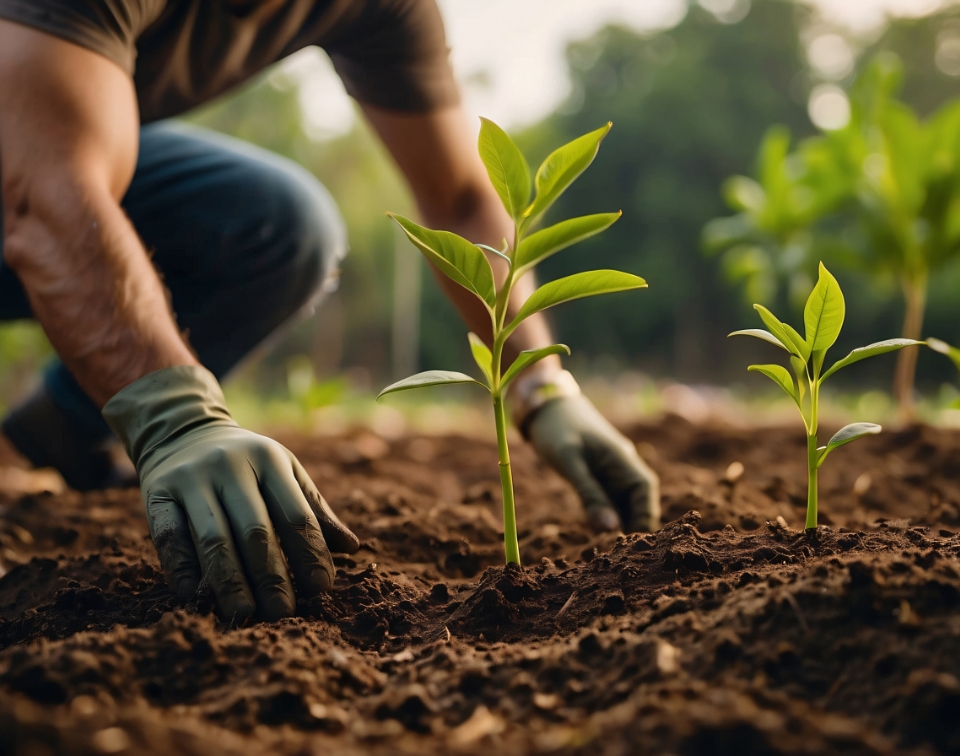How do we achieve sustainable fertiliser production?
A look at how decarbonisation strategies for ammonia could have a direct effect on sustainable fertiliser production worldwide.
In our previous blog, we looked at the top 4 decarbonisation strategies for ammonia production, and how our technology fits in with them.
Let’s now connect the pieces to translate how those strategies could have a direct effect on sustainable fertiliser production worldwide.
The current status
A Nature Scientific Report from 2022 greenhouse gas emissions from global production and use of nitrogen synthetic fertilisers in agriculture cited that 1.13 Gt CO₂ were attributed to nitrogen synthetic fertilisers in 2018, which accounts for around 2.1% of global GHG emissions. These constituted 38.6% of total emissions (438 Mt CO₂), closely matching the IEA’s and IRENA figures (450 Mt and 500 Mt, respectively) for ammonia production.
Indirect Emissions i.e. emissions from transportation (662 Mt CO₂) and field applications (29 Mt CO₂) together make up 61.4% of the total. Urea, the most widely used fertiliser globally, contributes 1.3 t CO2 per tonne applied to fields.
So, how do we achieve sustainable fertiliser production?
Recommended decarbonisation strategies for fertiliser production:
-
- Improved nitrogen use efficiency in agriculture that includes optimising fertiliser application rates and timing to reduce field emissions. This includes techniques like precision agriculture, which uses data and technology to tailor fertiliser applications to the specific needs of crops. This can help reduce emissions, lower fertiliser costs for farmers and improve water quality by reducing eutrophication. However, this strategy requires investment in technology and training for farmers for it to be implemented properly.
- Transition to Alternative Fertiliser Sources: Replacing synthetic nitrogen fertilisers with organic alternatives (e.g., livestock manure, compost) can reduce the reliance on high-emission synthetic fertilisers. This can help to reduce emissions, improve soil health, and reduce reliance on synthetic inputs. However, organic fertiliser availability and scalability are limited, and complete replacement of synthetic fertilisers is unlikely in the near future. An integrated approach combining synthetic and organic fertilisers is, therefore, a more practical solution.
-
- Emission Reduction in Transport and Application: Addressing emissions in transport logistics, particularly for fertilisers shipped long distances, can lower the indirect carbon footprint. Reducing these emissions requires improvements in logistics, such as more efficient transportation methods and localized production. Precision agriculture techniques can also minimise emissions during fertiliser application. The benefits of doing this are that it can reduce indirect emissions and lower transportation costs, but this requires investment in infrastructure and technology.
-
- Research and Development for Low-Impact Fertilisers: investing in fertiliser types that have lower emissions during both production and application stages. This includes greener production processes that avoid the use of fossil fuels, developing enhanced efficiency fertilisers, which release nutrients slowly and minimise losses, and producing slow-release fertilisers, which provide a more controlled nutrient supply. These will help to reduce emissions and improve nutrient use efficiency, but their adoption requires ongoing research and development efforts.
Low emission fertiliser production:
Let’s delve a bit deeper into how we can embrace emerging technologies and nurture them effectively to transform the way fertiliser is produced:
- Expand Lifecycle Emission Controls: Indirect emissions, particularly from transportation and on-field application, represent a large share of total emissions and must be addressed alongside production efficiency. Controlling these emissions requires a holistic approach, including optimising logistics, promoting local production, and adopting precision agriculture techniques.
- Accelerate Renewable Technology Adoption: The adoption of renewable energy-powered technologies for ammonia production is crucial for reducing direct emissions. Development of technologies will eventually lead to a cost-competitive sustainable ammonia production. This requires continued investment in research, development, and deployment of these technologies.
- Strengthen Policy Frameworks: we need taxes on CO2 emissions and incentives to adopt sustainable production technologies and practices earlier. For example, the EU’s CBAM and hydrogen cost incentives play essential roles in stabilising market conditions for clean ammonia, promoting long-term viability for green ammonia adoption and the production of sustainable N-synthetic fertilisers. Near-term policies, like CBAM, are intended to facilitate both immediate reductions (via CCS) and long-term decarbonisation via the adoption of renewable production and abatement technologies by making them more cost effective.
Where Plasma2X fits in:
Plasma2X technology has been identified as a key player in the adoption of using renewable energy to decarbonise ammonia production. Unlike traditional methods, Plasma2X uses plasma and electrocatalysis to produce ammonia from air and water using renewable electricity. This eliminates the need for fossil fuels in the production process, drastically reducing direct emissions.
Furthermore, because Plasma2X doesn’t require the high temperatures or pressures typically associated with ammonia production, it can be decentralized and located closer to where fertiliser is needed. This significantly reduces transportation needs and associated emissions, addressing the problem of indirect emissions.
Sustainable fertiliser production is not just an environmental necessity, it’s essential for ensuring long-term food security. By embracing a combination of strategies, including improved nitrogen use efficiency, a transition to alternative fertiliser sources, emission reductions in transport and application, research and development for low-impact fertilisers, and the adoption of innovative technologies like Plasma2X, we can cultivate a more sustainable future for agriculture and the planet. We must act now to ensure that future generations have access to both the food they need and a healthy, thriving environment.
